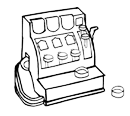How to store breast milk safely?
From producer to consumer. You can't get any more direct and ecological than this by practicing breastfeeding, but sometimes it's also very practical to be able to express your milk and delegate feedings. Just to give you a break, in case of temporary nipple injuries (some babies can be like carnivorous plants) or simply if you're an active WoMum who's gone back to work and social activities. And as with any food, the precious white gold needs to be stored under certain conditions to avoid the alteration of its precious nutritional properties, the development of germs and possible contamination of baby.
Expressing milk has one main advantage: freedom. Even if you love breastfeeding, and thanks to stylish, well-thought-out clothes (haven't we told you about the great brand Milk Away ?) it's now possible to do it whenever and wherever you want, sometimes it's good to take some time for yourself away from the most voracious mini-human you've ever known. A nap, a sports session, a doctor's appointment, a night out with your girlfriends - these are all moments you shouldn't miss when you're breastfeeding. Lhe other advantage of expressing milk and building up a supply is that you can go back to work without having to stop those much-appreciated mother-baby hand-to-mouth feedings.
Some tips on how to express and store breast milk safely:
- When expressing: breasts and hands must be clean. In fact, one shower a day is enough to ensure hygiene of your breasts, and remember to wash your hands just before expressing milk. If you use a breast pump, make sure it's clean before each new use (it's advisable to wash it in very hot water with a little washing-up liquid and rinse it thoroughly. It's best to air-dry on a clean kitchen towel) Containers used for storage (usually baby bottles or special storage sachets) must also be perfectly clean.
- Store breast milk at room temperature (i.e. between 15 and 25°C): freshly expressed milk can be consumed within four hours. This milk contains the most effective anti-bacterial properties. It is also richer in antioxidants, vitamins and lipids. It is preferable to refrigerated milk, which is preferable to frozen milk. Artificial milk comes in at the bottom of the podium.
- Store breast milk in the fridge (at a maximum of 4°C): the beverage should be drunk within three days. Avoid placing the milk in the fridge door, as frequent opening causes temperature variations. Store it in the coldest part of the fridge (which differs depending on whether the fridge is cold-static, cold-air or cold-ventilated). We'll leave you to delve into your instruction manuals...). Lhe disadvantage of cold is that it tends to diminish the nutritional qualities of breast milk, but on the other hand, it guarantees that it will keep well for several hours or days. Fridge cleanliness is also important, so remember to clean it from top to bottom at least once a month.
- Store breast milk in the freezer (at a minimum of -18°C): once frozen, milk can be stored for a longer period, up to 6 months. Bear in mind, however, that the composition of milk naturally changes according to the baby's age, and therefore his or her growth needs. It is therefore not advisable to give milk drawn off at two months of age when the child is six months old.
In general, avoid mixing milks (even those expressed on the same day to avoid exceeding shelf life and thermal shock). To be on the safe side, do not store leftovers from a bottle as baby may have contaminated the milk with bacteria in and around his mouth. To avoid waste (frankly, you're giving enough of yourself so every drop counts!), store small amounts at a time to avoid throwing away unconsumed milk. Be methodical and note on each container the date the milk was expressed. And finally, never, never, oh never, freeze thawed milk again, the risk of bad bacteria growing is too great. And this advice applies to all food taken out of the freezer whether you are 2 days, 2 months, 2 or 99 years old.
How do you reheat refrigerated or frozen breast milk?
With patience and care, either take it out of the freezer and put it in the fridge (allow a dozen hours), or put it in a container of warm water at 37° maximum, until it's at room temperature again. Bear in mind that putting a breast-milk sample in the fridge can cause the liquid to dissociate into layers. The fat often rises to the surface and forms a layer. The milk is still drinkable, however. Simply shake gently in circles to homogenize again. Avoid shaking it vigorously, as this may alter some of its components, which are nevertheless beneficial for the child. Once defrosted, milk left at room temperature should be consumed within two hours, or within twenty-four hours if left in the fridge.
If your baby is in a neonatal unit or specialised ward, or if you wish to donate your milk to a milk bank, these facilities may have stricter cleaning and storage recommendations. Find out more beforehand.
What to do with milk that has gone off?
A lot, in fact! Above all, don't throw it away. Even if it can't be consumed by the baby, breast milk can be used to clean the baby's bottom, or mixed with bath water (including your own) to soften the skin and combat the drying effects of limescale. It can also be used to soften soap, clean jewelry, remove pimples and more.
Breast milk is full of treasures. White gold.
And bon appétit Baby!
#milkawayapparel #inmumwetrust #breasfeeding #breastmilk #breastfeedingmom #breastfeedingjourney #breastfedbaby





